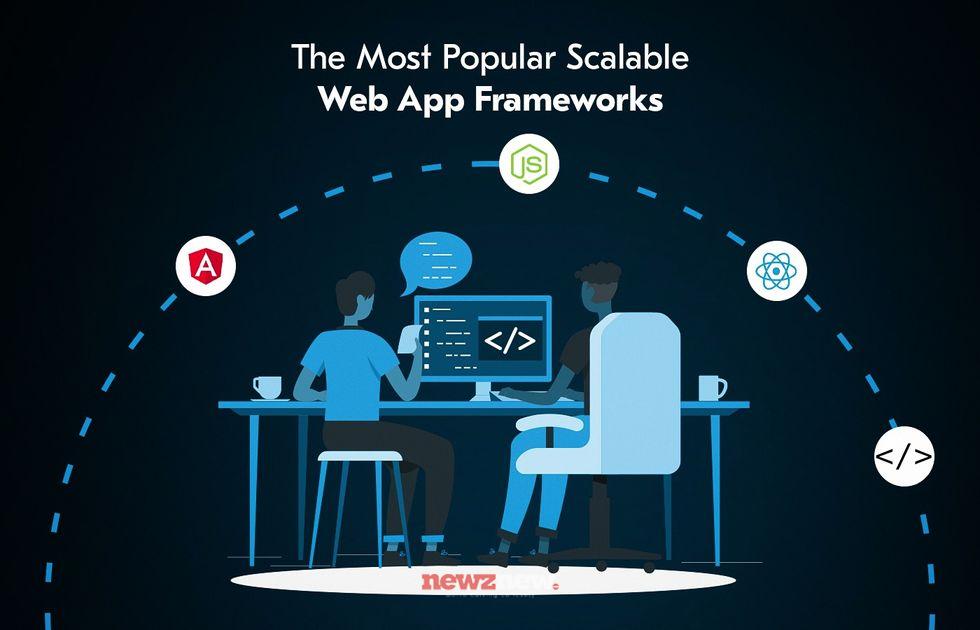Contents
- 1 Begin with a Clear Strategy
- 2 Select the Correct Template and Architecture
- 3 Ensure Performance and Scalability from Day One
- 4 Design a Role-Based and Secure Access Model
- 5 Develop a Content and Experience Strategy
- 6 Automate and Integrate Smartly
- 7 Add Commerce Capabilities (Where Applicable)
- 8 Test, Launch, and Iterate
- 9 Keep and Watch for Long-Term Success
- 10 Final Thoughts
How to Develop Scalable Portals with Salesforce Experience Cloud: As businesses expand, so do the needs of their digital presence. A scalable portal enables you to serve the requirements of users, be they customers, partners, or internal groups, without sacrificing performance or manageability. 
Salesforce Experience Cloud implementation enables this by providing flexible, secure, and customizable portal options suited to various groups of users.
Whether you are building a partner relationship management (PRM) portal, a self-service support center, or a branded customer dashboard, long-term success depends on building with scalability in mind. In this article, we will discuss how to plan, design, and build scalable portals using Salesforce Experience Cloud.
Begin with a Clear Strategy
The initial step in all portal development is having a specified strategy. In the absence of goals, user personas, and measures for success, even the best technology is likely to fail.
Begin by responding to:
- Who will be using the portal?
- What precise tasks or journeys must be made possible (e.g., filing a case, handling an order)?
- What measurable results do you desire (increased speed of support, more partner-sourced deals, enhanced satisfaction)?
Then, align stakeholders’ business and IT. Assign definite ownership for user access, content management, security, and development. Sharing understanding within departments results in a cleaner, faster, and more sustainable salesforce experience cloud implementation.
Select the Correct Template and Architecture
Salesforce Experience Cloud provides various templates. Each one has its use:
- Customer Account Portal for service-based interactions
- Partner Central for B2B collaboration and deal registration
- Help Center for knowledge base and case submission
- LWR Sites for high-performance custom portals
In case scalability and performance are your concern, the best place to begin with is LWR (Lightning Web Runtime). It is performance-optimized and allows developers to apply contemporary frontend practices using Lightning Web Components. Portals on LWR have faster loading and greater performance on large user bases.
Select a modular design to construct the login, dashboard, navigation, content area, and other important elements. This design allows for simple updates, testing, and reuse between pages or even other portals.
Ensure Performance and Scalability from Day One
Scalability isn’t merely about supporting more users; it’s about supporting more users effectively. It’s about delivering consistent performance no matter the traffic, use cases, or backend integrations.
Some tried methods are:
- Enable Content Delivery Network (CDN) for worldwide content distribution.
- Utilize Platform Cache to cache reusable data like profile details or frequent queries.
- Apply lazy loading in components so that only visible items load initially.
- Reduce backend calls by applying SOQL queries wisely, restricting returned fields, and indexing database queries.
- Utilize asynchronous Apex (Batch, Queueable, Scheduled jobs) to execute data-intensive tasks outside of the user session.
By implementing these practices, your portal won’t only get the job done when it ships; it’ll remain responsive as your audience and features grow.
Design a Role-Based and Secure Access Model
Security and scalability are two sides of the same coin. A securely designed portal confirms that sensitive data is protected and is only accessible to the appropriate users, and that access can increase with business complexity.
Major best practices:
- Utilize permission sets and profiles to provide a minimum required access.
- Use role hierarchies to manage record visibility (particularly valuable in partner portals).
- Use dynamic record-level sharing rules based on roles or ownership.
- Set up multi-factor authentication (MFA) and Single Sign-On (SSO) for external users.
Restrict exposure in public-facing portals by disabling unused objects or API access. Secure your data model before adding functionality.
Develop a Content and Experience Strategy
Even with the best features, an ill-designed or off-topic portal will not be used. The user experience, particularly content surfacing.
- Use Experience Builder to personalize layouts, themes, and brand without code.
- Organize and categorize content (articles, guides, FAQs) for easy access.
- Use Audience Targeting to present varying content to varying user segments, perfect for partners vs. resellers or new vs. repeat customers.
- Make your website mobile-responsive and ADA/WCAG compliant for universal accessibility.
- Content governance planning: Who updates what and how frequently? Outdated content can break trust and lower effectiveness with the passage of time.
Automate and Integrate Smartly
A scalable portal minimizes manual efforts with automation. Salesforce features such as Flow and Process Builder enable automation of:
- Welcome journeys for new users
- Lead assignment and routing
- Escalation of cases
- Order tracking notifications
You can also connect to other Salesforce clouds or third-party systems. When your portal entails transactions, connecting commerce cloud implementation services can make storefronts, product catalogs, price engines, and checkout flows accessible directly on your Experience Cloud website.
APIs (REST/SOAP) enable real-time data exchange, and AppExchange packages enable connections to tools such as DocuSign, payment gateways, or content libraries.
Add Commerce Capabilities (Where Applicable)
Most B2B and B2C portals can leverage embedded commerce experiences. With the integrated platform of Salesforce, commerce cloud implementation services can be taken to your portal.
This enables users to:
- Browse product catalogs
- View order history
- Check stock or pricing
- Submit and manage orders directly
Embedding commerce features minimizes friction and keeps the user journey centralized, particularly for distributors, vendors, or current customers.
Test, Launch, and Iterate
Prior to going live, utilize a staging environment to thoroughly test portal workflows:
- Validate login flows and role-based access for various user types.
- Test forms, cases, data sync, and reporting.
- Simulate high traffic to determine performance bottlenecks.
- Utilize sandbox to test new features without impacting production users.
After launch, continue to enhance. Gather user feedback and portal analytics (such as page views, bounce rate, completion rate) to inform upgrades. A portal is a living piece of software that must expand with your business.
Keep and Watch for Long-Term Success
Even the best portals need maintenance after deployment. Maintenance tasks involve:
- Scheduled content reviews and refreshes
- Quarterly permission audits and role validation
- Performance checking using tools such as Salesforce Optimizer
- Being current on Salesforce seasonal releases and patch notes
- Responding to user tickets or feature requests with agile updates
You should also monitor how your portal is helping achieve business objectives. Are cases being closed sooner? Are partners providing more leads? These metrics drive future investment.
Final Thoughts
A scalable portal is about building smart. With the right Salesforce Experience Cloud implementation, you get a foundation that can keep up with increasing users, shifting business demands, and future-proof technologies.
When you combine Experience Cloud with proven commerce cloud implementation services, your portal can handle personalized customer experiences, quick transactions, and rich integrations, all while being simple to manage.
Melonleaf Consulting has helped organizations in multiple industries develop portals that are secure, intuitive, and scalable. Their strategy integrates strategy, technical knowledge, and support to assist companies in maximizing their Salesforce environment, without making it overly complicated.






